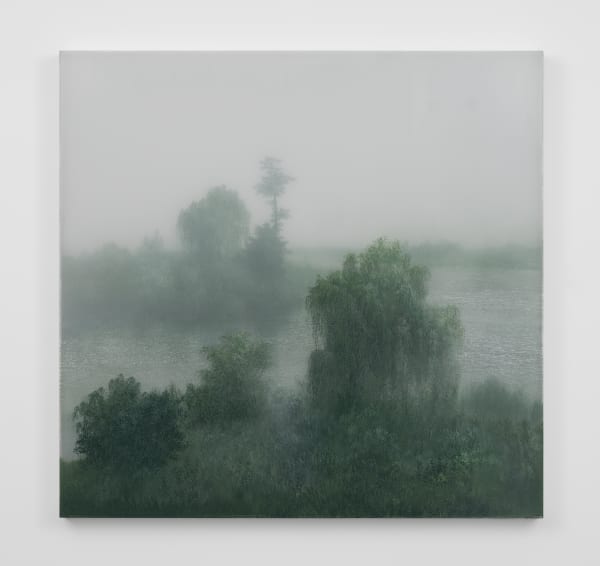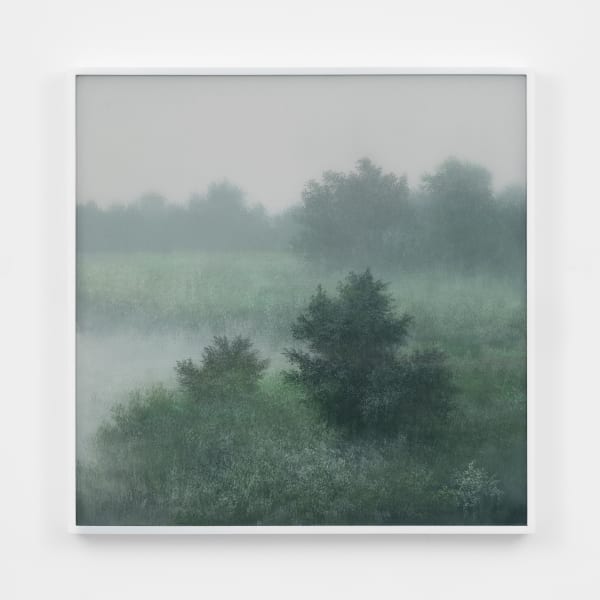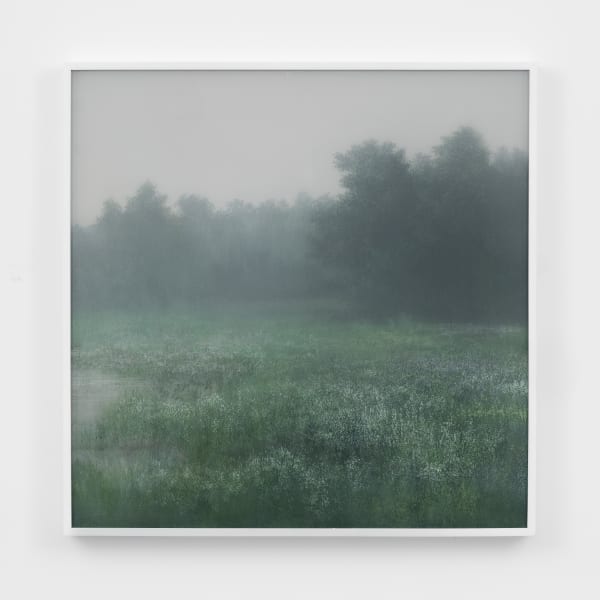-
Tina Kim Gallery is pleased to announce “There is no place,” a solo exhibition of new works by Kibong Rhee on view from October 3rd to November 2nd. It marks the artist’s second solo show at the gallery following his New York debut in 2011. An opening reception with the artist present will take place on Thursday, October 3rd from 6–8pm.
Since the 1980s, Rhee has consistently explored in his practice the interconnectedness of the world, specifically cycles of creation, dissolution, and regeneration, as well as the dynamic interplay between matter and spirit. Probing the meanings that emerge within these structures, he captures the coexistence of multiple realms and makes abstract concepts tangible. His works visually combine natural phenomena such as light, wind, water, and foam with the mechanical to evoke sensorial contemplation of the immaterial world that lies beyond perception. The relationships between disappearance and impermanence, and presence and absence are particularly central to his long-standing practice.
Although Rhee worked primarily with sculpture and installation prior to the 2000s, he has become deeply engrossed in the potential of painting as a “device” and the concept of “painting as passage.”[1] Layering transparent fabric over his canvases, Rhee paints his primary motif—trees bathed in mist—with an almost photographic precision. Water plays a crucial role in his oeuvre, as Rhee believes that water, in its variety of forms, embodies the fleetingness of life. As Rhee states, “The world is inherently either blurry or chaotic;” and mist, in his paintings, both conceals objects and provokes viewers to approach the work.[2] His fog-shrouded landscapes evoke an air of mystery, a world where reality and illusion intermingle. His vignettes appear suspended in an in-between state, either materializing or disappearing. Rhee’s paintings do not aim for perfect representation; rather, they question the very possibility of it. The artist seeks to convey the incomplete nature of the world, opening up a philosophical space to explore what cannot be fully articulated.
-
Rhee’s landscapes are filled with a sense of stillness; time seems to weigh on the motionless branches as the silent passage of time continues to flow. In a monumental, 10-meter-long landscape from Rhee’s “Mistygraphy” series, viewers can immerse themselves in this experience of time. The titles of two other works, The Left Page and Recto and Verso (both 2024), aptly capture a liminal sense of temporality. The unopened left page (verso) of a book and the right page (recto), soon to be part of the past, suggest a space where the future carries traces of what came before.
-
-
Differences – Remnant and Differences – Absence (both 2024) resemble the appearance of an after-image, and visually attest to the notion that life is an ongoing attempt to revisit and reconcile unresolved remnants of the past. It is the continuous tension between the ever-renewing present and the anticipation of an unknowable future. Much like the way film passes through a movie projector interspersed with alternating frames of darkness, the world is suspended in the brief blackout between the opening and closing of eyelids. With each blink, the world disappears and is reborn.
-
-
Also featured in “There is no place” is the installation Mistygraphy – Cut Section (Last) (2024), which revisits the 2016 piece Perpetual Snow. Here, a transparent glass screen foregrounds a black wall, reflecting the viewer’s image within the exhibition space. In the original 2016 work, a kinetic sculpture modeled after the artist’s hand continuously creates small circular patterns across a glass surface, symbolizing eternal snow. In its latest form, the work reflects the fleeting presence of passing visitors. Viewers find themselves becoming part of the work, experiencing both presence and absence in that fleeting moment. Through this psychological and sensorial interaction, Mistygraphy – Cut Section (Last) invites contemplation on the nature of existence and transience.
Through his work, Rhee does not merely ask what is present, but persistently questions what is disappearing. The ephemeral beings in his mist-soaked worlds invite us to consider what can truly be represented, what lies at the boundaries of perception, what those boundaries might reveal, and what moments are only possible within such limits.
-
Featured Works
-
Video by Hyunjung Rhee
Kibong Rhee In the Studio
Dispatches From Korea August 18, 2020 -
 Kibong Rhee, 2024. Image © the artist and Tina Kim Gallery. Photo by Hyunjung Rhee
Kibong Rhee, 2024. Image © the artist and Tina Kim Gallery. Photo by Hyunjung Rhee
![]() 525 West 21st Street, New York, NY 10011 T 1‑212‑716‑1100 info@tinakimgallery.com
525 West 21st Street, New York, NY 10011 T 1‑212‑716‑1100 info@tinakimgallery.com
Facebook, opens in a new tab.
Instagram, opens in a new tab.
Youtube, opens in a new tab.
Artsy, opens in a new tab.
Ocula, opens in a new tab.
Copyright © 2025 Tina Kim Gallery
This website uses cookies
This site uses cookies to help make it more useful to you. Please contact us to find out more about our Cookie Policy.
Join our mailing list
* denotes required fields
We will process the personal data you have supplied in accordance with our privacy policy (available on request). You can unsubscribe or change your preferences at any time by clicking the link in our emails.















